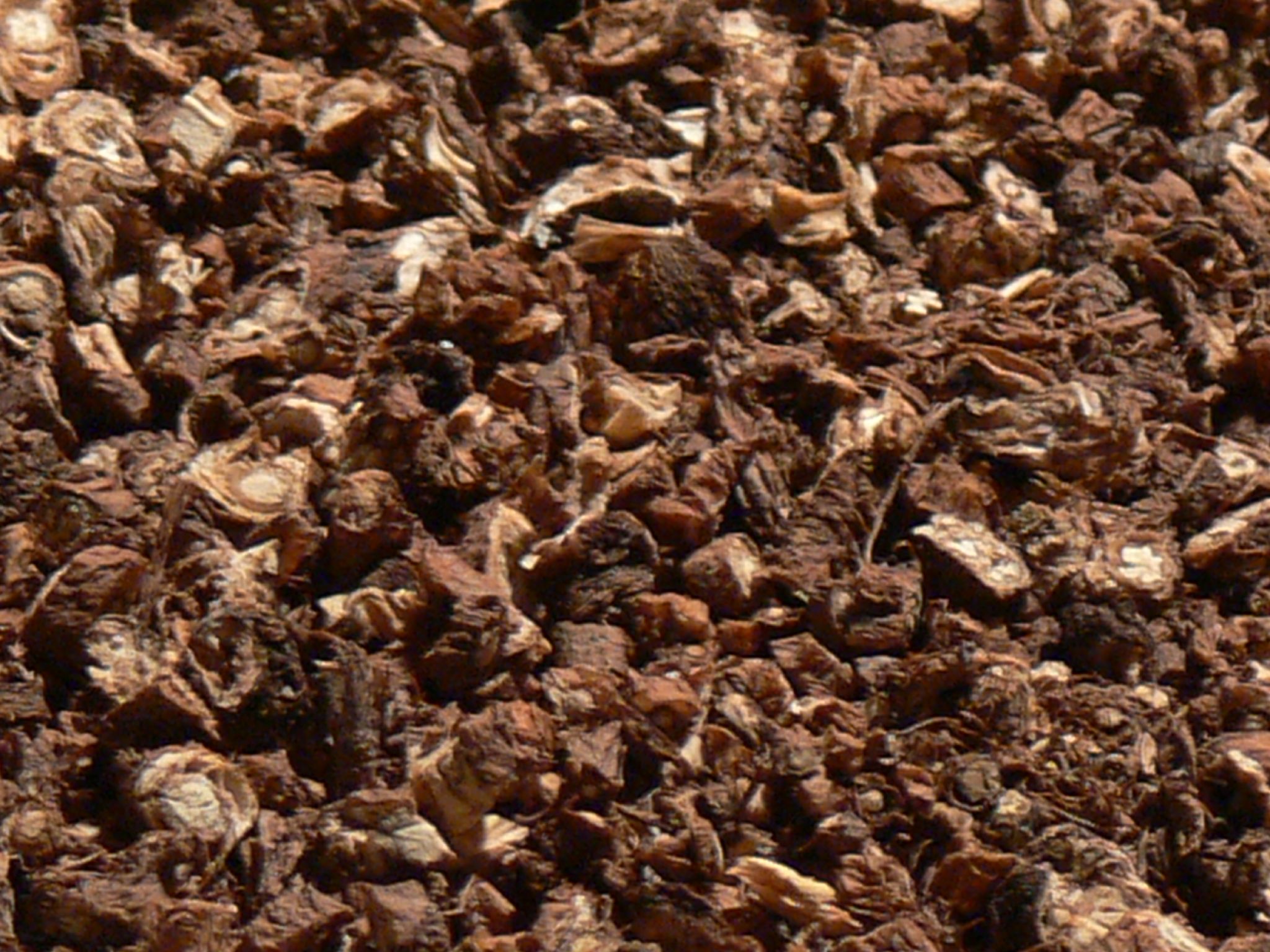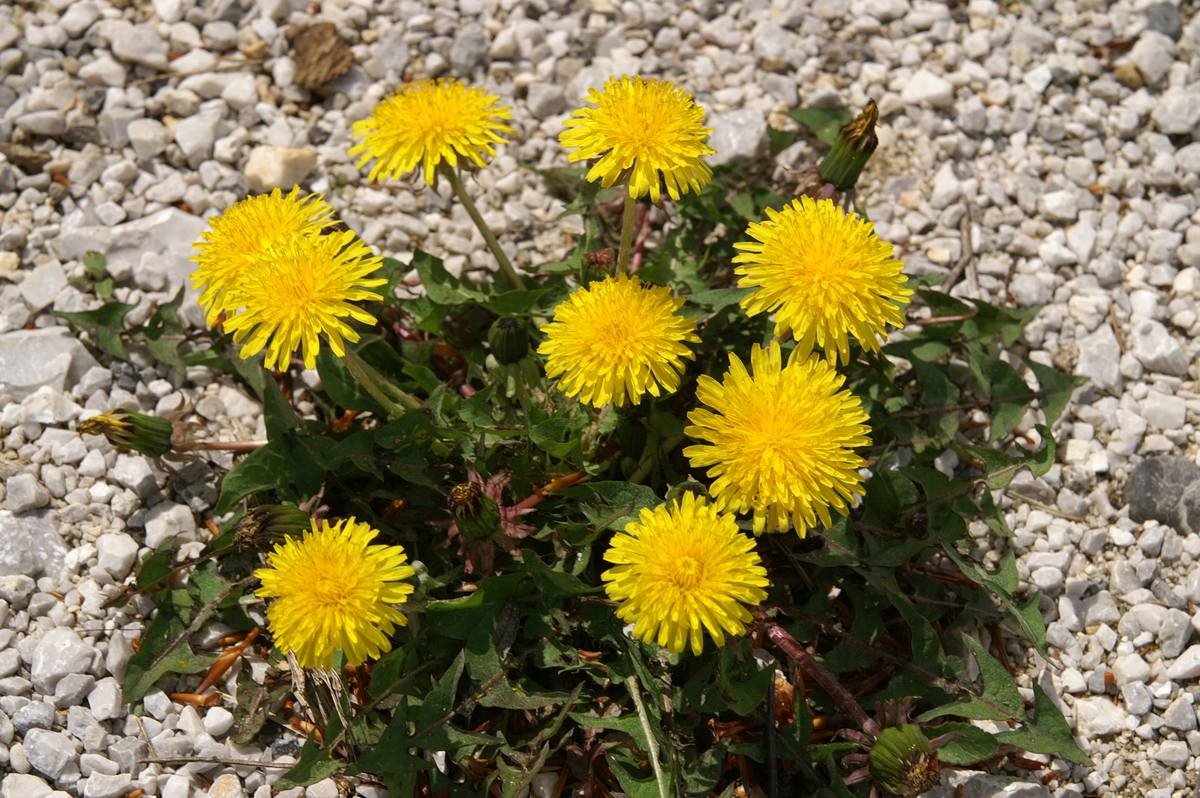|
Dandelion Coffee
Dandelion coffee (also dandelion tea) is a herbal tea, tisane made from the root of the Taraxacum, dandelion plant. The roasted dandelion root pieces and the beverage have some resemblance to coffee in appearance and taste, and it is thus commonly considered a coffee substitute. History The usage of the dandelion plant dates back to the ancient Egyptians, Greeks and Romans. Additionally, for over a thousand years, Traditional Chinese medicine, Chinese traditional medicine has been known to incorporate the plant. Susanna Moodie explained how to prepare dandelion 'coffee' in her memoir of living in Canada, ''Roughing it in the Bush'' (1852), where she mentions that she had heard of it from an article published in the 1830s in ''New York Albion'' by a certain Dr. Harrison. Dandelion 'coffee' was later mentioned in a ''Harper's Magazine, Harpers New Monthly Magazine'' story in 1886. In 1919, dandelion root was noted as a source of cheap 'coffee'. It has also been part of edible plan ... [...More Info...] [...Related Items...] OR: [Wikipedia] [Google] [Baidu] |
Herbal Tea
Herbal teas, technically known as herbal infusions, and less commonly called tisanes (UK and US , US also ), are beverages made from the infusion or decoction of herbs, spices, or other plant material in hot water. Often herb tea, or the plain term ''tea'', is used as a reference to all sorts of herbal teas. Many herbs used in teas/tisanes are also used in herbal medicine and in folk medicine. These "teas" do not usually contain any true '' tea'' ('' Camellia sinensis''), but some herbal blends do contain true tea (e.g., the Indian classic masala chai). The term "herbal" tea is often used to distinguish these beverages from "true" teas (e.g., black, green, white, yellow, oolong), which are prepared from the cured leaves of the tea plant, '' Camellia sinensis''. Unlike true teas, most tisanes do not naturally contain caffeine (though tea can be decaffeinated, i.e., processed to remove caffeine). A number of plants, however, ''do'' contain psychoactive compounds, such a ... [...More Info...] [...Related Items...] OR: [Wikipedia] [Google] [Baidu] |
Taraxacum Officinale
''Taraxacum officinale'', the dandelion or common dandelion, is a herbaceous perennial flowering plant in the daisy family, Asteraceae. The common dandelion is well known for its yellow flower heads that turn into round balls of many silver-tufted fruit that disperse in the wind. These balls are called "clocks" in both British and American English. The name "blowball" is also used. The common dandelion grows in temperate regions of the world in areas with moist soils. They are very hardy plants, able to grow in a variety of environments, and are tolerant of crowding, extremes of temperature, and low moisture. As a result of this hardiness, in addition to its ability to rapidly propagate itself, the dandelion has become established over a wide range via human activity, originally being native to Eurasia, but can also be found across the Americas, southern Africa, India, Australia and New Zealand as a result of incidental or deliberate introductions. It is often considered a we ... [...More Info...] [...Related Items...] OR: [Wikipedia] [Google] [Baidu] |
Acylation
In chemistry, acylation is a broad class of chemical reactions in which an acyl group () is added to a substrate. The compound providing the acyl group is called the acylating agent. The substrate to be acylated and the product include the following: *alcohols, esters * amines, amides * arenes or alkenes, ketones A particularly common type of acylation is acetylation, the addition of the acetyl group. Closely related to acylation is formylation, which employ sources of "HCO+ in place of "RCO+". Examples Because they form a strong electrophile when treated with Lewis acids, acyl halides are commonly used as acylating agents. For example, Friedel–Crafts acylation uses acetyl chloride () as the agent and aluminum chloride () as a catalyst to add an acetyl group to benzene: This reaction is an example of electrophilic aromatic substitution. Acyl halides and acid anhydrides of carboxylic acids are also common acylating agents. In some cases, active esters exhibit compa ... [...More Info...] [...Related Items...] OR: [Wikipedia] [Google] [Baidu] |
Taraxacoside
Taraxacoside is an acylated γ-butyrolactone glycoside with the molecular formula C18H22O10 which has been isolated from roots of the plant ''Taraxacum officinale ''Taraxacum officinale'', the dandelion or common dandelion, is a herbaceous perennial flowering plant in the daisy family, Asteraceae. The common dandelion is well known for its yellow flower heads that turn into round balls of many silver-tuf ...''. References Further reading * Glycosides Tetrahydrofurans Phenyl compounds {{Ether-stub ... [...More Info...] [...Related Items...] OR: [Wikipedia] [Google] [Baidu] |
Syringin
Syringin is a natural chemical compound first isolated from the bark of lilac (''Syringa vulgaris'') by Meillet in 1841. It has since been found to be distributed widely throughout many types of plants. It is also called eleutheroside B, and is found in ''Eleutherococcus senticosus'' (Siberian ginseng). It is also found in dandelion coffee. Syringin may potentially have antidiabetic effects. Chemically, it is the glucoside of sinapyl alcohol Sinapyl alcohol is an organic compound structurally related to cinnamic acid. It is biosynthetized via the phenylpropanoid biochemical pathway, its immediate precursor being sinapaldehyde. This phytochemical is one of the monolignols, which a .... References External links * Phenylpropanoid glucosides Hydroxymethyl compounds {{aromatic-stub ... [...More Info...] [...Related Items...] OR: [Wikipedia] [Google] [Baidu] |
Glycoside
In chemistry, a glycoside is a molecule in which a sugar is bound to another functional group via a glycosidic bond. Glycosides play numerous important roles in living organisms. Many plants store chemicals in the form of inactive glycosides. These can be activated by enzymatic, enzyme hydrolysis, which causes the sugar part to be broken off, making the chemical available for use. Many such plant glycosides are used as medications. Several species of ''Heliconius'' butterfly are capable of incorporating these plant compounds as a form of chemical defense against predators. In animals and humans, poisons are often bound to sugar molecules as part of their elimination from the body. In formal terms, a glycoside is any molecule in which a sugar group is bonded through its anomeric carbon to another group via a glycosidic bond. Glycosides can be linked by an O- (an ''O-glycoside''), N- (a ''glycosylamine''), S-(a ''thioglycoside''), or C- (a ''C-glycoside'') glycosidic bond. Accord ... [...More Info...] [...Related Items...] OR: [Wikipedia] [Google] [Baidu] |
Phenylpropanoid
The phenylpropanoids are a diverse family of organic compounds that are biosynthesized by plants from the amino acids phenylalanine and tyrosine in the shikimic acid pathway. Their name is derived from the six-carbon, aromatic phenyl group and the three-carbon propene tail of coumaric acid, which is the central intermediate in phenylpropanoid biosynthesis. From 4-Coumaroyl-CoA, 4-coumaroyl-CoA emanates the biosynthesis of myriad natural products including Monolignol, lignols (precursors to lignin and lignocellulose), flavonoids, isoflavonoids, coumarins, aurones, stilbenes, catechin, and phenylpropanoids. The coumaroyl component is produced from cinnamic acid. Phenylpropanoids are found throughout the plant kingdom, where they serve as essential components of a number of structural polymers, provide protection from ultraviolet light, defend against herbivores and pathogens, and also mediate plant-pollinator interactions as floral pigments and scent compounds. Hydroxycinnamic ... [...More Info...] [...Related Items...] OR: [Wikipedia] [Google] [Baidu] |
Guaianolide
In organic chemistry, a guaianolide is a type of sesquiterpene lactone consisting of a gamma-lactone and either a cyclopentane or cyclopentene, both fused to a central cycloheptane or cycloheptene structure. There are two subclasses, structural isomers differing in the location that part of the lactone is bonded to the central ring, known as 6,12-guaianolides and 8,12-guaianolides. Because some of the natural products in this class of tricyclic phytochemical have been found to be potentially biologically active, there has been interest in their chemical syntheses. The full biosynthetic origin of most of the known guaianolides has not been established, but the pathway is generally presumed to begin with the formation of a germacrene lactone derived from farnesyl pyrophosphate Farnesyl pyrophosphate (FPP), also known as farnesyl diphosphate (FDP), is the precursor to all sesquiterpenes, which comprises thousands of compounds. These include all sesquiterpenes as well as sterols an ... [...More Info...] [...Related Items...] OR: [Wikipedia] [Google] [Baidu] |


